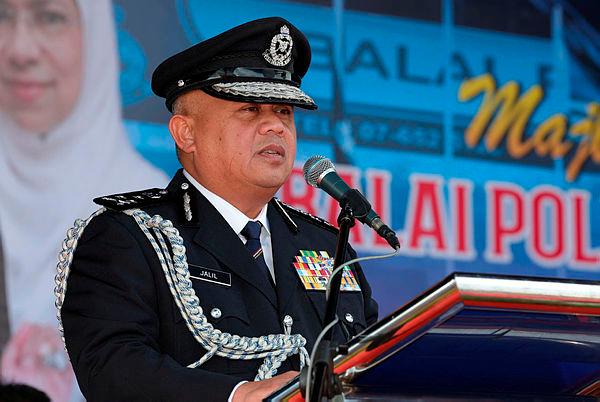PETALING JAYA: As of last year, 72 active criminal organisations that posed a significant threat to national security were operating in the country, said former director of the Federal Police Crime Investigation Department (CID) Datuk Seri Abd Jalil Hassan.
Abd Jalil, who retired in April, said, “If left unaddressed, these gangs have the potential to escalate criminal activities, which will jeopardise the country’s overall well-being and safety”.
He said of the 72 gangs, 49 were identified in 2013 and 23 in 2015. Together, they have a total of 9,042 active members.
He added that the figure was troubling and underscores the potential for further growth, warning that there is a risk of witnessing a substantial increase in the number of teenagers being drawn to these gangs.
“This presents a significant challenge for law enforcement and the well being of the community.”
In response to Abd Jalil’s comments, Malaysia Crime Prevention Foundation (MCPF) senior vice-chairman Datuk Seri Ayub Yaakob said criminal activities by gangs present a significant concern to communities.
“Their activities encompass extortion, money laundering, drug trafficking, robberies and prostitution.
“Such criminal activities undermine community well-being and jeopardise public safety. Hence it is imperative to take comprehensive measures to address and counter their activities,” he said.
Established in 1993, MCPF operates as an NGO committed to promoting public awareness of crime prevention, fostering active public engagement through collaborative initiatives with the government and actively contributing to the enhancement of effective measures for crime prevention.
On the recruitment of teenagers into gangs, Ayub noted that the problem is particularly pronounced as many active criminal organisations tend to establish their presence in urban areas, close to schools, colleges and universities.
“This proximity raises alarm bells about the potential influence and recruitment of youths. It highlights the need for targeted preventive measures in educational and urban settings,” he said.
In response to the concerns of parents regarding their children’s vulnerability to gang influence, MCPF actively supports and collaborates closely with the police force.
“This collaboration is aimed at addressing the pressing issue of gang violence, with a shared commitment to safeguarding the well-being of youth and ensuring that effective measures are in place to deter them from joining criminal organisations.”
Ayub also said a compelling rationale for community involvement in crime prevention lies in the fact that law enforcement alone cannot sustain a safe community.
“The community’s active support and engagement is essential to successfully fight crime. This collaborative approach enhances the effectiveness of crime prevention measures and serves to alleviate anxiety within the community.
“By fostering awareness and engagement, the concept of community involvement empowers residents with the knowledge and tools needed to contribute to the overall safety and security of their neighbourhoods.”
To raise awareness of the danger of gang activities, Ayub said MCPF actively engages with communities through talks, workshops, exhibitions and sharing sessions featuring victims or former convicts.
“We also facilitate meet-and-greet sessions with communities and encourage joint crime prevention awareness efforts.
“To prevent youth involvement in gangs, MCPF collaborates with the Education Ministry to establish crime prevention clubs in all secondary and primary schools nationwide,” he said.
In the ongoing battle against gang activities, Ayub acknowledged that MCPF faces numerous challenges.
“One significant hurdle is the public’s reluctance to report gang-related crimes out of fear for their safety. Peer pressure among young people remains a pervasive issue and contributes to their involvement in gang activities.
“Economic factors also play a role, with individuals being drawn into gangs as a result of financial pressures. Addressing these challenges requires a comprehensive and community-focused approach.”









